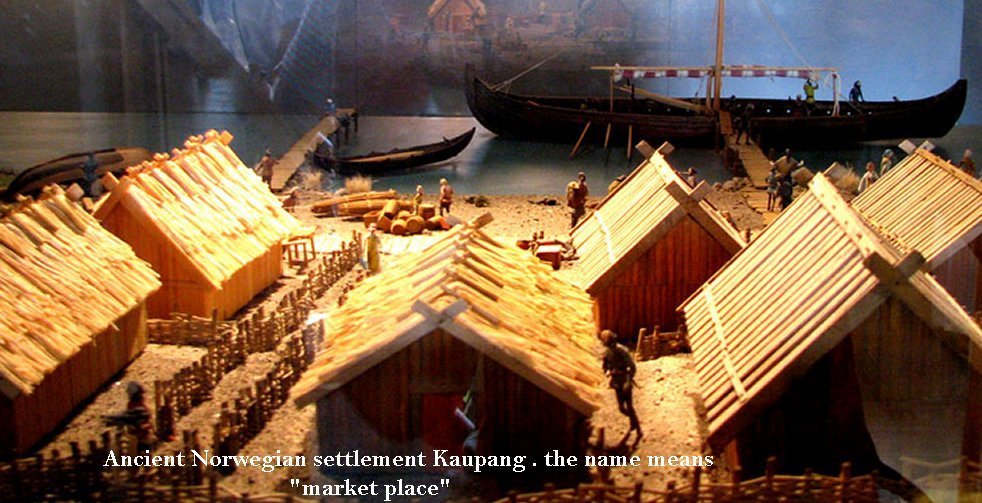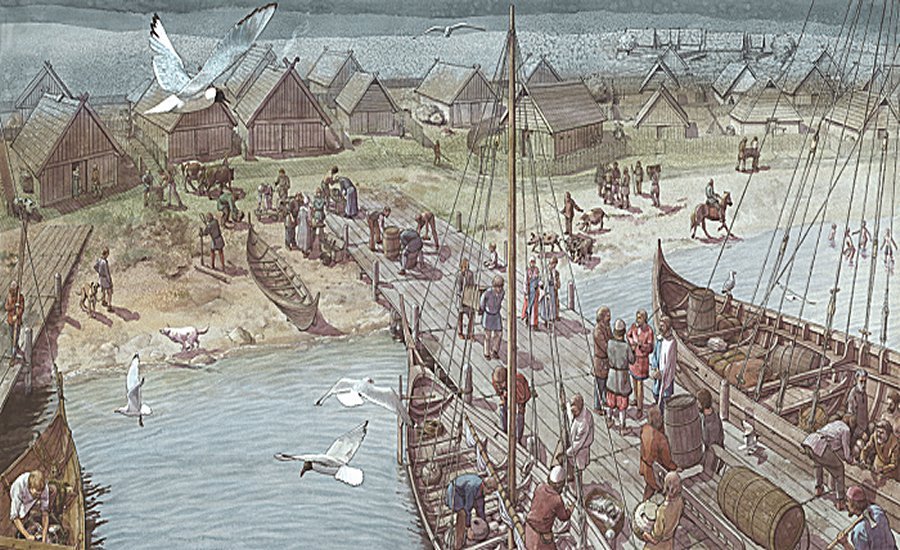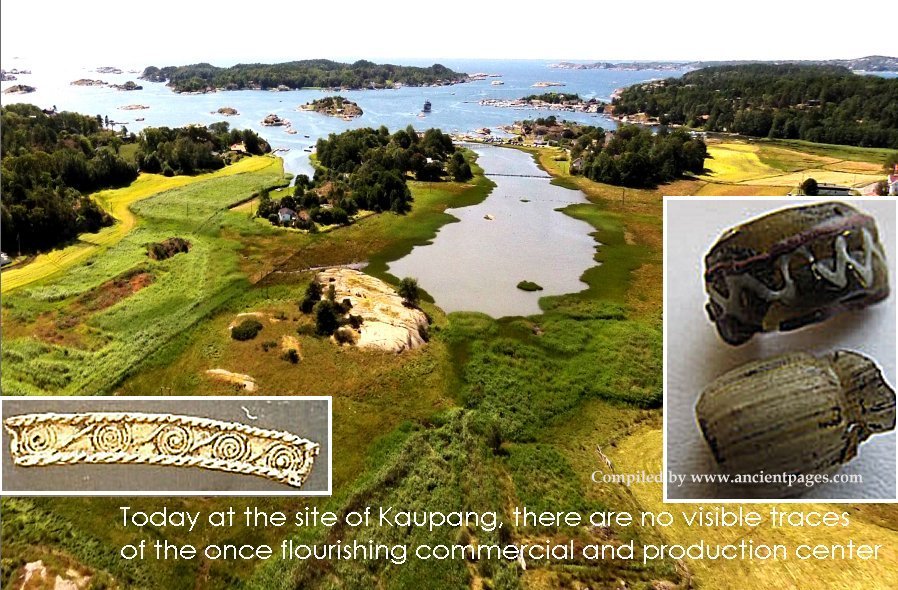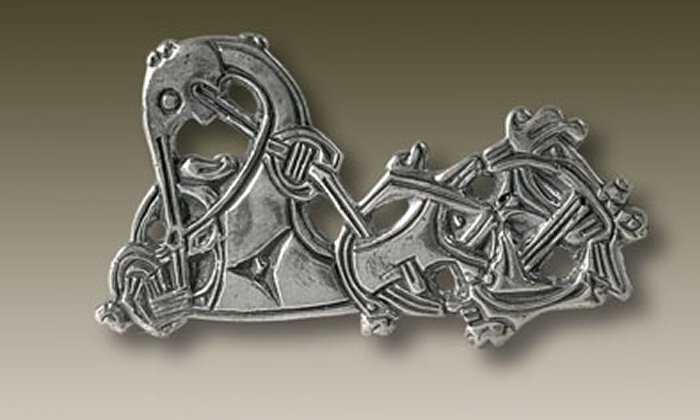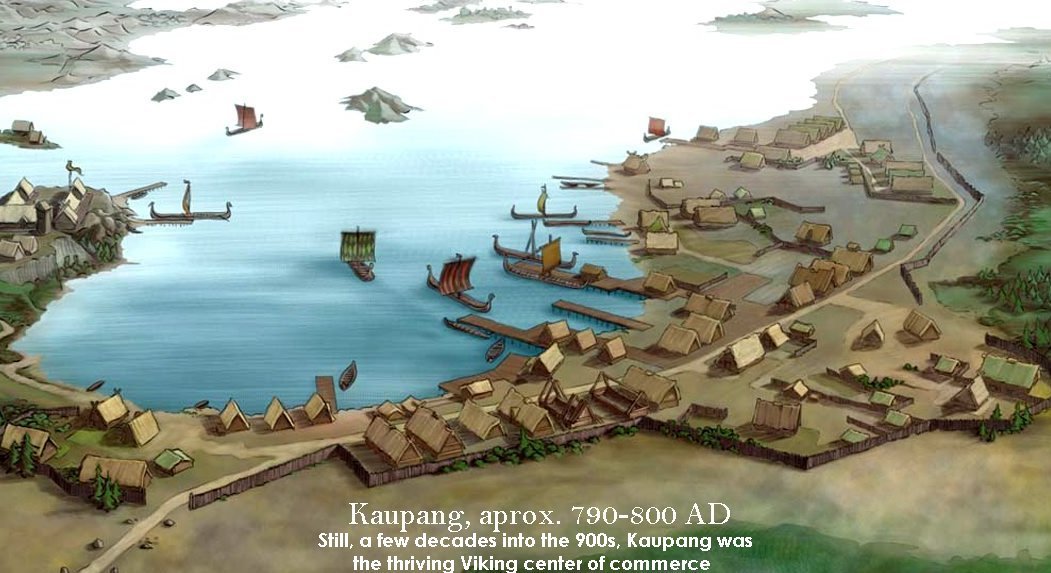Kaupang – Flourishing Viking Town – A Commercial Hub And Transit Port For North Sea Trade
A. Sutherland - AncientPages.com - Founded in the 780s, Kaupang (in Old Norse' kaupangr', 'market' or 'trading place) was Norway's important commercial and production city for Vikings and others.
Kaupang is located in Skiringssal (now known as Huseby), not far from Larvik, in county Vestfold at the mouth of the Oslofjord, in the south of Norway. Vestfold( means "West of the Fold") and Fold is the ancient name of the Oslofjord.
Kaupang Viking village – model. Image credit: vikingbyen.org
This particular region of Norway is known for its impressive archaeological sites like Oseberg, Gokstad, and Borre, all associated with the Viking period. Oseberg Ship -discovered at Oseberg, Norway, in 1904 by Knut Rom, a local farmer - is an extraordinary discovery.
Kaupang is mentioned in the Ynglinga saga (1225) by Snorri Sturluson and other early medieval sources that indicate that the area was an essential royal seat in the 8th and 9th centuries. The center - probably a seasonal but important market - flourished during the more significant part of the 9th century. It was a place of trade and cultural contact with foreigners and traders from all over Norway who came to buy and sell.
Although it was not as effective as its two Nordic "sister cities," Birka in Sweden and Hedeby in southern Jutland (now Schleswig, Germany), Kaupang was a well-known and highly effective hub for trade and production, a few decades into the 900s.
Archaeological Finds From Kaupang
"In the 8th century, there was only one town in Norway that could, with some right, be called a city. It was on a beach by the Viksfjorden in Larvik municipality in Vestfold, where the farm Kaupang is today.
Credits: Flemming Bau, 2004 - Historisk Museum
It was founded at the same time as the first Viking attacks on the British Isles and the continent. In its day, the place was probably called the shopping center in Skiringssal. In this tiny town, there were perhaps 400-600 souls, and their urban life in Norway got its early start some 1,200 years ago..." 1
As we see, at that time, not many people inhabited Kaupang, considered the first Norwegian city that functioned as a trade hub, transit port, and prosperous production center, where craftsmen produced large quantities of pins, bracelets, and harnesses for horses, both for wealthy customers and ordinary “folk flest” (the masses). They manufactured and traded goods of domestic and foreign goods.
Excavations carried out by a Norwegian archaeologist, Charlotte Blindheim (1917 - 2005), uncovered a wealthy graveyard, a complex of houses and workshops for metalworking with iron, bronze, and silver, where skilled artisans and smiths produced exquisite pieces of jewelry, ornaments and other metal goods of high quality.
Viking jewelry was beautiful and made by skilled craftsmen. A large-scale jewelry production in the Viking town of Kaupang developed about 1,150 years ago.
Weaving weights and spinning wheels were found at Kaupang's other workshops, indicating an extensive production of thread and textiles.
Artifacts (until today, about 100,000 finds) also include weapons from France, small pieces of amber from Birka and the Baltic Sea coast with cut marks, half-finished amber beads, and colorful glass beads from the Middle East and the Mediterranean, as well as Frankish beakers of glass and ceramic tubs from the Rhine districts of Germany.
Later excavations at the Kaupang site also revealed many Russian, Frankish, and Arabic (Cufic) silver coins and one bronze coin of great value, dating to the Roman period.
However, the production of vessels made of soapstone was the central part of Kaupang's export to Jutland and Hedeby.
This Oseberg-style brooch, dates to circa 900AD and related to finds revealed in the excavations at Kaupang. Image credit: Kulturhistorisk Museum/University of Oslo
Why Was Kaupang Trade Center Abandoned So Quickly?
In the late 9th century, the activity at Kaupang ceased rather quickly. The last funerals took place at Kaupang, and according to ancient sources, the site was abandoned for unknown reasons and changed into a ghost town in the early 10th century.
Towards the end of the Middle Ages, most of Kaupang's area was turned into cultivated land.
Several reasons have been suggested to explain Kaupang's decline. According to one theory, Kaupang was located in Vestfold County under Danish rule at that time. The establishment of Kaupang would have resulted from a Danish initiative around the year 800.
There are indications that the Danish hegemony weakened during the first half of the 10th century, and as a result, Kaupang began to decline gradually.
Later, when the Danish dominance under King Harald Bluetooth again gained ground there, the Danes probably wanted to establish another or several trade centers. Still, this time, they decided to choose other geographical locations and not Kaupang.
Updated on October 16, 2023
Written by A. Sutherland – AncientPages.com Staff Writer
Copyright © AncientPages.com. All rights reserved. This material may not be published, broadcast, rewritten or redistributed in whole or part without the express written permission of AncientPages.com
Expand for referencesHansen G. Everyday Products in the Middle Ages
Herbert Jankuhn., Trade and Settlement in Central and Northern Europe up to and during the Viking Period
T Douglas Price, An Archaeological History from the First Humans to the Vikings
More From Ancient Pages
-
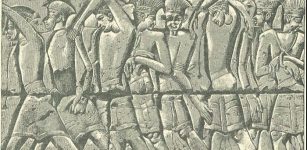 Mysterious Philistines: They Migrated Across Mediterranean – DNA Testing Shows
Archaeology | Jul 4, 2019
Mysterious Philistines: They Migrated Across Mediterranean – DNA Testing Shows
Archaeology | Jul 4, 2019 -
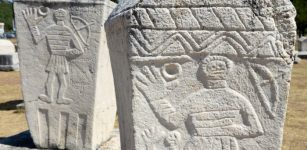 Enigmatic ‘Stone Sleepers’ – Megalithic Tombstones ‘Stecci’ In The Western Balkans
Civilizations | Dec 3, 2018
Enigmatic ‘Stone Sleepers’ – Megalithic Tombstones ‘Stecci’ In The Western Balkans
Civilizations | Dec 3, 2018 -
 New Discoveries In Excavated Ancient Temple Linked To Secret Mithras Religion
Archaeology | May 15, 2018
New Discoveries In Excavated Ancient Temple Linked To Secret Mithras Religion
Archaeology | May 15, 2018 -
 Fascinating Time Capsule With Secret Code Found In North Carolina
Featured Stories | Jun 6, 2024
Fascinating Time Capsule With Secret Code Found In North Carolina
Featured Stories | Jun 6, 2024 -
 Statue Of Apollo Discovered in Ancient City Of Prusias ad Hypium, Turkey
Archaeology | Aug 26, 2022
Statue Of Apollo Discovered in Ancient City Of Prusias ad Hypium, Turkey
Archaeology | Aug 26, 2022 -
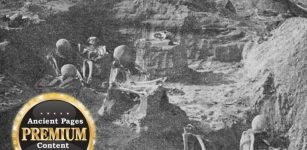 Giants Roamed The Earth Millions Of Years Ago
Featured Stories | Sep 30, 2015
Giants Roamed The Earth Millions Of Years Ago
Featured Stories | Sep 30, 2015 -
 Legend Of The Eight Immortals Who Know The Secrets Of Nature
Chinese Mythology | May 21, 2016
Legend Of The Eight Immortals Who Know The Secrets Of Nature
Chinese Mythology | May 21, 2016 -
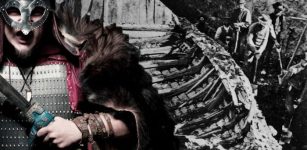 Mystery Of The Brave Viking Chief Buried On The Gokstad Ship
Featured Stories | Mar 14, 2016
Mystery Of The Brave Viking Chief Buried On The Gokstad Ship
Featured Stories | Mar 14, 2016 -
 Have Archaeologists Found Evidence Of A Universal Ancient Civilization That Gave Birth To All Other Cultures Across The World?
Featured Stories | Mar 13, 2025
Have Archaeologists Found Evidence Of A Universal Ancient Civilization That Gave Birth To All Other Cultures Across The World?
Featured Stories | Mar 13, 2025 -
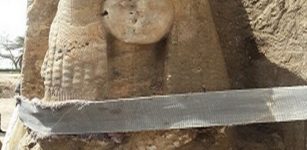 Archaeologists Unearthed Alabaster Statue Of Queen Tiye In Luxor, Egypt
Archaeology | Mar 24, 2017
Archaeologists Unearthed Alabaster Statue Of Queen Tiye In Luxor, Egypt
Archaeology | Mar 24, 2017 -
 New Details On Discovery Of San Jose 300-Year-Old Shipwreck That Sank With Treasure Of Gold, Silver, And Emeralds
Archaeology | May 23, 2018
New Details On Discovery Of San Jose 300-Year-Old Shipwreck That Sank With Treasure Of Gold, Silver, And Emeralds
Archaeology | May 23, 2018 -
 On This Day In History: ‘Battle On The Ice’ – Army Of Prince Nevsky Against Teutonic Knights Was Fought – On Apr 5, 1242
News | Apr 5, 2016
On This Day In History: ‘Battle On The Ice’ – Army Of Prince Nevsky Against Teutonic Knights Was Fought – On Apr 5, 1242
News | Apr 5, 2016 -
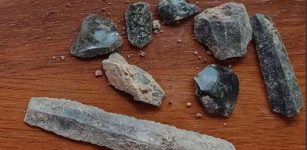 Tracking Prehistoric Relations With AI From The Middle Stone Age To Antiquity
Archaeology | Jul 14, 2023
Tracking Prehistoric Relations With AI From The Middle Stone Age To Antiquity
Archaeology | Jul 14, 2023 -
 Mysterious Sumerian Star Tablet And Strange Divine Omens – Communication With The Gods – Part 2
Featured Stories | Feb 18, 2021
Mysterious Sumerian Star Tablet And Strange Divine Omens – Communication With The Gods – Part 2
Featured Stories | Feb 18, 2021 -
 On This Day In History: Edict Of Pistres ‘A New Law’ Against Viking Raids Issued – On July 25, 864
News | Jul 25, 2016
On This Day In History: Edict Of Pistres ‘A New Law’ Against Viking Raids Issued – On July 25, 864
News | Jul 25, 2016 -
 Pre-Clovis, Paisley Caves: Archaeologists Identified The Earliest Population Of North America
Archaeology | Jul 16, 2020
Pre-Clovis, Paisley Caves: Archaeologists Identified The Earliest Population Of North America
Archaeology | Jul 16, 2020 -
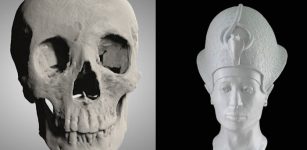 King Tut’s Face Reconstructed By Bioarchaeologist
Archaeology | Nov 26, 2022
King Tut’s Face Reconstructed By Bioarchaeologist
Archaeology | Nov 26, 2022 -
 Mystery Of Ancient Sami People Buried Underwater – New DNA Breakthrough
Archaeology | Jun 12, 2019
Mystery Of Ancient Sami People Buried Underwater – New DNA Breakthrough
Archaeology | Jun 12, 2019 -
 Old Cannon Found At Construction Site
Archaeology | Apr 22, 2020
Old Cannon Found At Construction Site
Archaeology | Apr 22, 2020 -
 Praetorian Guard: Roman Elite Unit Assigned To Protect But Also Involved In Confinement, Execution, Spying And Threats
Featured Stories | May 26, 2018
Praetorian Guard: Roman Elite Unit Assigned To Protect But Also Involved In Confinement, Execution, Spying And Threats
Featured Stories | May 26, 2018

